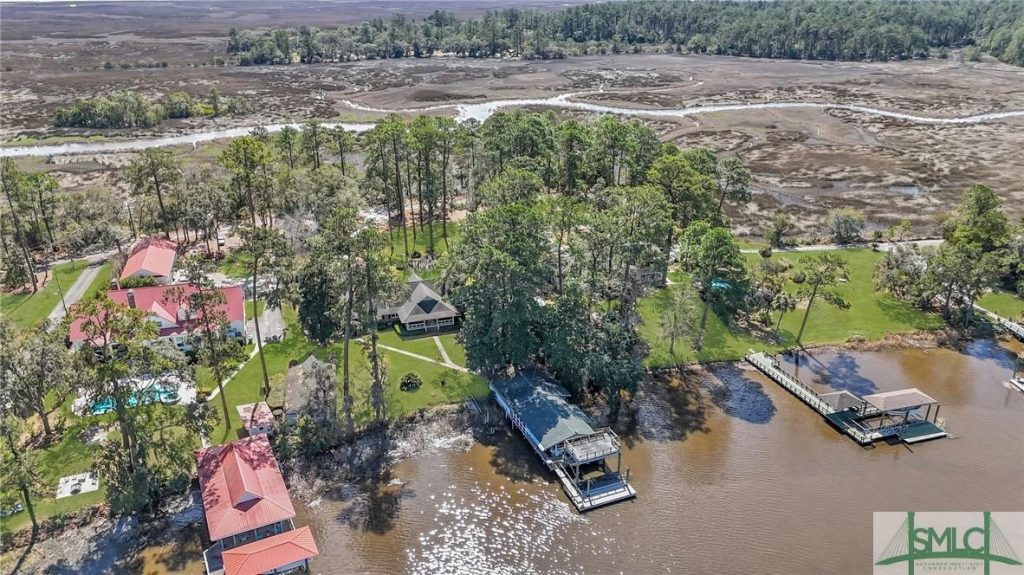Flooding poses a significant threat to communities across the globe, and 31419 Savannah is no exception. With its unique geography and climate patterns, this area faces recurring flood hazards that can disrupt lives, damage property, and strain local resources. Understanding and implementing effective strategies to mitigate these risks is not just a matter of preparedness—it’s essential for safeguarding the well-being and resilience of the community. In this article, we’ll explore practical, proven approaches tailored to the specific challenges of 31419 Savannah, offering insights for residents, planners, and policymakers alike to reduce the impact of floods and build a safer future.
Table of Contents
- Understanding Savannahs Flood Risk Landscape
- Implementing Community-Based Early Warning Systems
- Enhancing Infrastructure Resilience Through Green Solutions
- Promoting Public Awareness and Emergency Preparedness Programs
- To Conclude
Understanding Savannahs Flood Risk Landscape
Savannah’s unique topography and proximity to the coast create a complex flood risk profile that demands careful analysis. The city’s low-lying areas, combined with an aging drainage infrastructure, make it particularly vulnerable to both tidal flooding and intense rainfall events. Seasonal hurricanes and tropical storms further exacerbate this risk, often overwhelming stormwater systems and causing widespread inundation. Additionally, the rising sea levels associated with climate change portend an alarming increase in flood frequency and severity, underscoring the need for adaptive and forward-thinking mitigation approaches.
Within this environment, several key factors contribute prominently to flood hazards in the 31419 area:
- Flat coastal plains that hinder rapid drainage and encourage ponding of floodwaters.
- Heavy rainfall patterns typical of the southeastern U.S., which can overload existing sewer systems.
- Proximity to tidal estuaries, allowing backflow of water during storm surges.
- Urban development that has increased impervious surfaces, reducing natural absorption areas.
Recognizing these interconnected elements allows planners, residents, and policymakers to better prioritize resources and craft strategies that not only address immediate flood threats but also build long-term resilience against evolving climatic impacts.
Implementing Community-Based Early Warning Systems
To empower Savannah’s neighborhoods in flood risk management, community participation is vital. Establishing robust channels for information dissemination, such as local radio broadcasts, mobile alerts, and community bulletin boards, ensures that residents receive timely and actionable updates. Training local volunteers to monitor water levels and weather patterns creates a network of vigilant observers who can relay critical data ahead of official warnings. This grassroots approach not only accelerates response times but also builds trust and resilience within the community.
Key elements for success include:
- Inclusive engagement: Ensuring diverse representation from all affected groups enhances system legitimacy and coverage.
- Accessible technology: Utilizing simple, affordable tools like SMS alerts caters to those with limited internet access.
- Regular drills and education: Conducting community workshops and simulations keeps the population prepared and informed.
- Collaborative partnerships: Integrating local authorities, NGOs, and residents fosters a coordinated response framework.
Enhancing Infrastructure Resilience Through Green Solutions
Urban infrastructure in flood-prone areas like 31419 Savannah faces increasing challenges due to climate variability and rapid development. Integrating green solutions such as constructed wetlands, permeable pavements, and urban green spaces can significantly improve the ability of the city’s systems to absorb and manage stormwater. These nature-based measures work by enhancing natural water retention and filtration processes, reducing reliance on traditional gray infrastructure that often fails under extreme conditions. Implementing vegetative buffers along waterways not only minimizes erosion but also creates habitats, boosting local biodiversity while providing a sustainable defense against floodwaters.
To maximize resilience, communities should adopt a hybrid approach combining engineered solutions with ecological design principles. Key practices include:
- Rain Gardens: Small, strategically placed basins that capture runoff and promote infiltration.
- Green Roofs: Vegetative layers on rooftops that absorb rainwater, lower urban temperatures, and reduce peak flow.
- Tree Canopies: Large trees that intercept rainfall and reinforce soil stability.
These options not only mitigate flood hazards by slowing and storing water but also improve air quality and enhance urban aesthetics. By embracing these sustainable practices, 31419 Savannah can cultivate a resilient infrastructure capable of withstanding future hydrological stresses while fostering a healthier environment for its residents.
Promoting Public Awareness and Emergency Preparedness Programs
Empowering residents with knowledge about flood risks is the cornerstone of building a resilient community in 31419 Savannah. Local governments and organizations must collaborate to deliver accessible, transparent information through multiple channels, including social media campaigns, community workshops, and printed materials in public spaces. Tailoring messages to target vulnerable populations ensures that every household understands the specific dangers they face and the steps they can take to protect themselves and their property. This continuous education fosters a culture of vigilance and proactive behavior, reducing the potential for panic and confusion during emergencies.
To complement awareness efforts, establishing robust emergency preparedness programs is essential. Encouraging families and businesses to develop personalized flood action plans, including evacuation routes and emergency supply kits, lays the groundwork for efficient, coordinated responses when a flood event occurs. Additionally, community drills and simulation exercises can sharpen response skills and highlight gaps in current plans. Essential elements of these programs include:
- Clear communication protocols between emergency services and the public
- Accessible early warning systems tailored for 31419’s geography
- Partnerships with local organizations to assist vulnerable groups such as the elderly and disabled
- Resources and training for volunteers to support relief efforts
To Conclude
In a city like 31419 Savannah, where the threat of flooding is both real and recurring, adopting effective mitigation strategies is not just prudent—it’s essential. From enhancing infrastructure and improving early warning systems to community education and sustainable urban planning, every action counts in reducing flood risks and safeguarding lives and property. As climate patterns continue to evolve, staying proactive and informed will be key to resilience. By working together—residents, local officials, and experts alike—Savannah can build a safer, more prepared community ready to face future floods with confidence.






